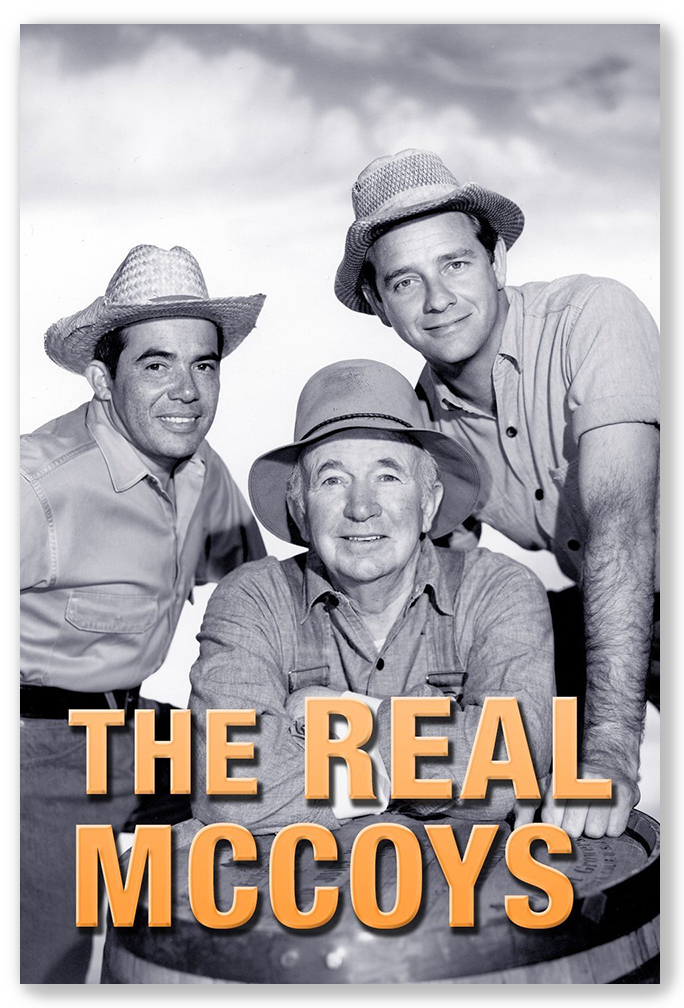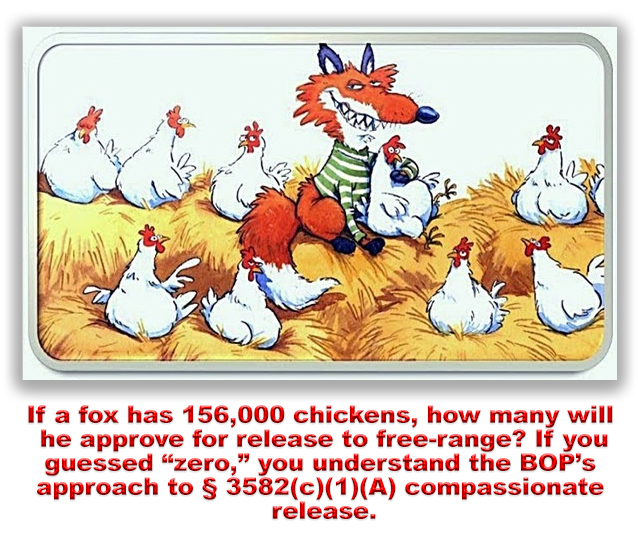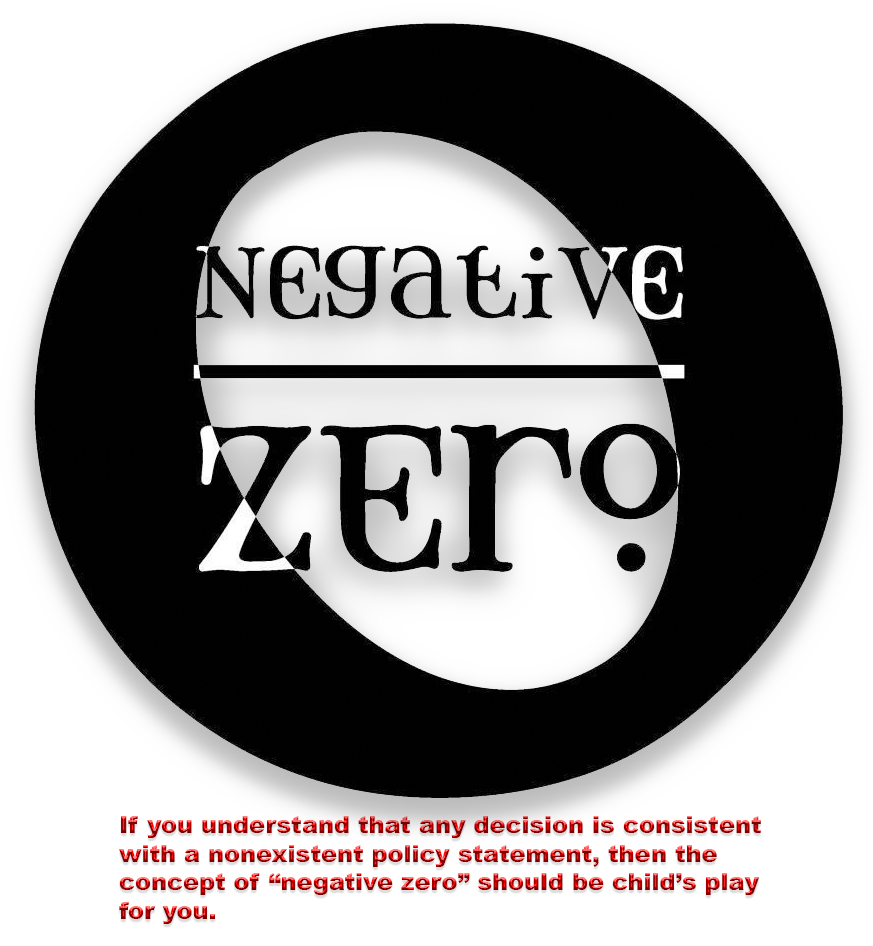We post news and comment on federal criminal justice issues, focused primarily on trial and post-conviction matters, legislative initiatives, and sentencing issues.

THE REAL MCCOY
 The compassionate release statute, 18 USC § 3582(c)(1)(A)(i), requires that any sentence reduction be “consistent with applicable policy statements issued by the Sentencing Commission.” The policy statement implicated by the statute is set out in USSG § 1B1.13, a Guideline which lists three very specific reasons for granting compassionate release, and a fourth “catch-all” provision permitting grant of a compassionate release motion if “as determined by the Director of the Bureau of Prisons, there exists in the defendant’s case an extraordinary and compelling reason other than, or in combination with, the [other three] reasons.”
The compassionate release statute, 18 USC § 3582(c)(1)(A)(i), requires that any sentence reduction be “consistent with applicable policy statements issued by the Sentencing Commission.” The policy statement implicated by the statute is set out in USSG § 1B1.13, a Guideline which lists three very specific reasons for granting compassionate release, and a fourth “catch-all” provision permitting grant of a compassionate release motion if “as determined by the Director of the Bureau of Prisons, there exists in the defendant’s case an extraordinary and compelling reason other than, or in combination with, the [other three] reasons.”
USSG § 1B1.13 was written before the First Step Act authorized inmates to file their own sentence reduction motions. The Guideline has never been changed, because the Sentencing Commission has lacked a quorum, and thus has been able to conduct no business, since 2018. But that has not stopped the government from arguing that compassionate release motions could not be granted because the Director of the BOP has not decided that possessing COVID-19 risk factor is an extraordinary and compelling reason for a sentence reduction.
Many judges decided that because § 1B1.13 was written back in the day when only the BOP could file the motion, it was a relic that could be ignored. But not all. The result has been a terrible disparity between district courts in granting compassionate release motions: the same set of facts that justify a sentence reduction in front of one judge would be rejected by another.
Last September, the 2nd Circuit laid down the law on compassionate release in United States v. Brooker (some are calling the case United States v. Zullo), ruling that district courts have broad discretion to consider “any extraordinary and compelling reason for release that a defendant might raise” to justify a sentence reduction under § 3582(c)(1)(A), and that Guideline § 1B1.13 only applies to compassionate release motions brought by the BOP (which would be virtually none of them). Then, two weeks ago, the 6th Circuit followed Brooker/Zullo in United States v. Jones, and the 7th agreed in United States v. Gunn.
 It may be hard to remember that compassionate release motions get filed for reasons other than COVID-19. One reason advanced by some defendants has been that they received horrific sentences because of stacked § 924(c) convictions. Recall that before First Step, if you robbed a bank with a gun, you got maybe 87 months for the robbery and a mandatory 60 months more for the gun. But rob three banks on successive days, and you would get 87 months for the robbery, 60 more months for the gun used in the first robbery, 300 months more for the gun used the next day, and 300 more months for the gun used the third day. This was because § 924(c) specified that each subsequent § 924(c) conviction carried 300 months. First Step changed that, making clear that the 300-month sentence only applied if you committed a § 924(c) offense after being convicted of the first offense.
It may be hard to remember that compassionate release motions get filed for reasons other than COVID-19. One reason advanced by some defendants has been that they received horrific sentences because of stacked § 924(c) convictions. Recall that before First Step, if you robbed a bank with a gun, you got maybe 87 months for the robbery and a mandatory 60 months more for the gun. But rob three banks on successive days, and you would get 87 months for the robbery, 60 more months for the gun used in the first robbery, 300 months more for the gun used the next day, and 300 more months for the gun used the third day. This was because § 924(c) specified that each subsequent § 924(c) conviction carried 300 months. First Step changed that, making clear that the 300-month sentence only applied if you committed a § 924(c) offense after being convicted of the first offense.
First Step did not make the § 924(c) changes retroactive. Nevertheless, after it passed some guys with stacked § 924(c) violations filed compassionate release motions, arguing that it was extraordinary and compelling to make them serve much longer sentences when the law had changed, and people being sentenced now did not face the same penalty.
One guy in Virginia, Thomas McCoy, and three others from Maryland filed such cases. Their respective district courts agreed with the motions, cutting their sentences to time served. But the government appealed, arguing that the sentence reduction did not fit § 1B1.13, and even if they did, the fact that the defendants had stacked § 924(c) sentences was not extraordinary and compelling because in First Step, Congress decided against retroactivity of the First Step changes to § 924(c). Last week, the 4th Circuit sided with the defendants, in the process pushing the bounds of compassionate release to new horizons.
The 4th Circuit agreed with Brooker, Gunn and Jones that § 1B1.13 – because it refers only to compassionate release motions filed by the BOP – is not an “applicable policy statement” within the meaning of the statute, and thus may be ignored.
 Beyond that, the 4th rejected the Government’s argument that there was nothing wrong with holding the defendants to their draconian sentences, ruling instead that “the district courts in these cases appropriately exercised the discretion conferred by Congress… We see no error in their reliance on the length of the defendants’ sentences, and the dramatic degree to which they exceed what Congress now deems appropriate, in finding “extraordinary and compelling reasons” for potential sentence reductions…”
Beyond that, the 4th rejected the Government’s argument that there was nothing wrong with holding the defendants to their draconian sentences, ruling instead that “the district courts in these cases appropriately exercised the discretion conferred by Congress… We see no error in their reliance on the length of the defendants’ sentences, and the dramatic degree to which they exceed what Congress now deems appropriate, in finding “extraordinary and compelling reasons” for potential sentence reductions…”
The appellate holding is huge, suggesting that sentence unfairness and rehabilitation gives sentencing judges the right to make sentence reductions under § 3582(c)(1)(A)(i).
United States v. McCoy, Case No 20-6821, 2020 U.S. App. LEXIS 37661 (4th Cir., Dec. 2, 2020)
– Thomas L. Root





